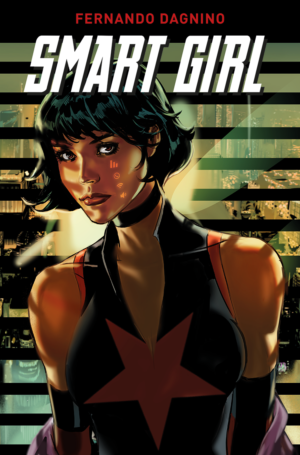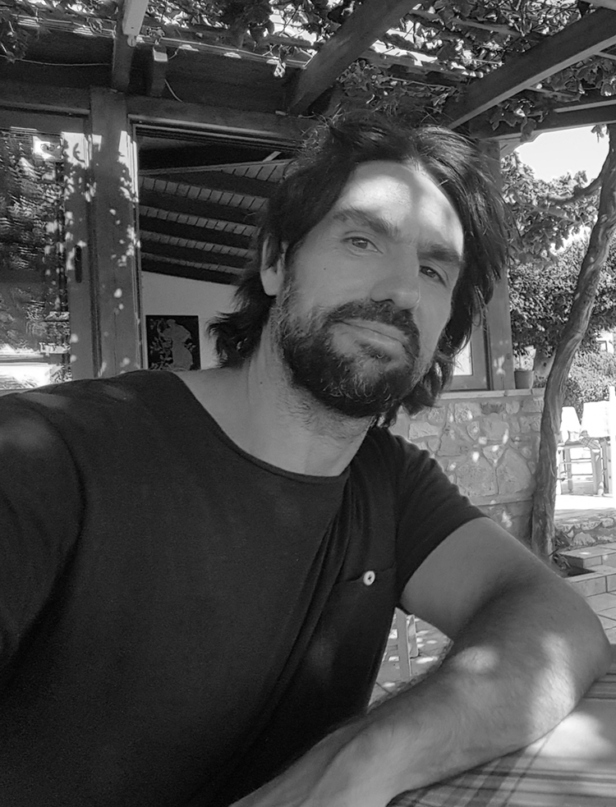The upcoming graphic novel, Smart Girl, is set in the near future, when tech giant Gorgona holds a monopoly on computer-human interfaces known as Schemata. These androids have become ubiquitous with everyday life across the world.
Yuki, un-affectionately called ‘scrappy’ by her owner, is a Smart Girl – an android servant used for everything from security and domestics to carnal pleasure. When she starts to malfunction, she is soon to be replaced and destroyed. But something in her changes, and Yuki doesn’t accept her end, instead, she becomes self-aware…
Taking a stand against her abusive master, Yuki goes on the run. Believed to be defective and hostile, she is hunted by Gorgona, and plans to fight back for the only thing that truly matters – her right to life and freedom.
Created by celebrated Marvel and DC artist, Fernando Dagnino, Smart Girl is out this October and we sat down with Dagnino to discuss how Blade Runner is a big influence on the graphic novel and how both creating the art and writing Smart Girl had him walking on the fringe of artistic schizophrenia…
Where and when did you first get the idea for Smart Girl?
The idea for Smart Girl started off as a short story back in 2010. The story was temporarily named ‘The Assistant’. It told the story of a malfunctioning Gynoid whose master, a despotic CEO, decides to change her for a new model, just as we do with our smartphones, but then she decides to take revenge on him using all of the personal data she had stored in her memory.
The story already contained the central themes of Smart Girl: the problem of programmed obsolescence, the emancipation from the artificial identity, the quest for essence and the emptiness derived from objectivizing human relations…
What have been your biggest influences when creating Smart Girl?
As regards the story the biggest influences have come from classic sci-fi authors such as Philip K. Dick, Ursula K. Leguin and also from the philosopher Donna J. Haraway’s ‘ Cyborg Manifesto’ which has been a constant guide throughout the writing of the script.
On the artistic side and also partially on the story, the first Blade Runner movie from 1982 and other sci-fi cyberpunk classics like Ghost In The Shell have been a permanent reference I constantly make tribute to on the pages of Smart Girl.
What has it been like working as both writer and artist and what has been the biggest challenge?
The biggest challenge has been to walk on the fringe of artistic schizophrenia between the writer in me and the artist in me without going nuts. I would say merging both approaches: the textual and the visual in one flowing narrative has been the greatest challenge indeed. But a highly intense and fulfilling one.
I had written a graphic novel before named Kasandra aimed at younger audiences but Smart Girl was my first long adult comic book. So as a beginner I was trying to find a writing method that would fit me best as a writer and artist.
Of course, I didn’t find it so I wrote the complete script as if the writer and the artist were two different people. That script remained as the skeleton of the story till the end but I realised as each of the graphic stages were starting (i.e. layout, rough pencils and inking) that I was revising and correcting the script. As the story was coming to life, I felt I had to modify some of the scenes, change the dialogue or even rewrite the whole ending of a chapter. So, in fact, I was using each graphic stage as if it were a new draft of the script. Until the very end of the process the story was not definitely closed.
What is your process for developing characters?
They are developed from personal experience. People I know, even instances of myself and of course afterward I fully developed the backstories or bibles that record the full life of the character before the novel begins. For some of the less polyhedral characters, I sometimes use the personalities described in the enneagram; an ancient method to understand personality types.
I would say that one of the hardest things was once you’ve set the different personalities of each character, then to give each one a different voice that would make them sound unique and coherent within their role in the narration.

What is the biggest difference in working on well-known characters and publishers like DC, and creating your own story and characters?
There’s a huge difference. Working with such iconic characters as Superman or Wonder Woman is a delight for the fanboy inside of me but also a great challenge, as you have to deal with the burden of the immense history behind these characters.
At the same time, I would say creativity is somehow limited by editorial lines. The time spent on the series and many other factors so that sets a distance with the character. Whereas in the case of your own characters you start to build a kind of intense emotional bond and identification with them as they are based on your own personal concerns and interests
The art in Smart Girl plays with a few different styles as you cut between flashbacks scenes. Was that a conscious choice?
Yes, the main story that takes place in the present time has been entirely digitally drawn whereas the flashbacks that weave the story together from the beginning to the end were painted in watercolour. The idea, of course, was to provide two types of renderings so it would be easy to differentiate the watery movement of memories from the accurate linework of the present time.
What is it like working in black and white?
I personally love black and white comics. I think the essence of graphic storytelling lies in the line drawing; the shadows, textures and the balance between black and white. So I think working in black and white forces the artist to have a more skilled control of the entire rendering.
Besides, one of the things I love about comic books is that it implies a process of creative reading. Just in the same manner as it lacks sound and motion, we as readers complete it with our imagination – all the missing elements creating an intimate daydream.
In that same manner, the absence of colour opens a way for the readers’ minds to recreate the scenes in their minds, in their own hue and intensity.
Who is your favourite Smart Girl character to draw and why?
One of my favourite characters is Cynthia because she is funny, authentic and wise. But then again I can’t hide my devotion for Yuki. I think she condenses the story in the expression of her eyes, and also Ether is one of my favourites to draw as she has a very pulpy feel to her, which I love.
In Smart Girl’s foreword you outline a detailed background and set up to the world of Smart Girl. Are there more stories for this world?
Definitely, yes. Although this first volume is a self-conclusive story arc. Many questions regarding the world in which the story unfolds are left unanswered. In fact, I already have a rough layout of what would be the next two volumes…
What’s next for you?
Well, right now I’m having a blast with Blade Runner Origins for Titan Comics. I‘m just half the way through so there’s still much more to come. In parallel, I’m working on Winter Queen my next project for French editor Glenat, it’s a black magic thriller that I’m also writing and drawing.
Smart Girl by Fernando Dagnino is out in October 2021 from Titan Comics.
